The world’s biggest physics experiment, the Large Hadron Collider (LHC) at CERN, straddling the French-Swiss border, is about to begin its second round of experiments since its original start-up in 2008. Now colliding particles at twice the speed as it did before, the LHC teams now hope to uncover the mysteries of dark matter and energy, which are believed to hold galaxies together and power the accelerating expansion of the universe. The LHC and its detectors had to be considerably upgraded to make these experiments possible. Here, CERN’s engineers talk about how the upgrades were made, how the engineering enables the exploration of new physics and what might be next for large physics experimentation.
- Jean-Philippe Tock (JT), senior LHC engineer
- Francesco Pietropaolo (FP), neutrino physicist
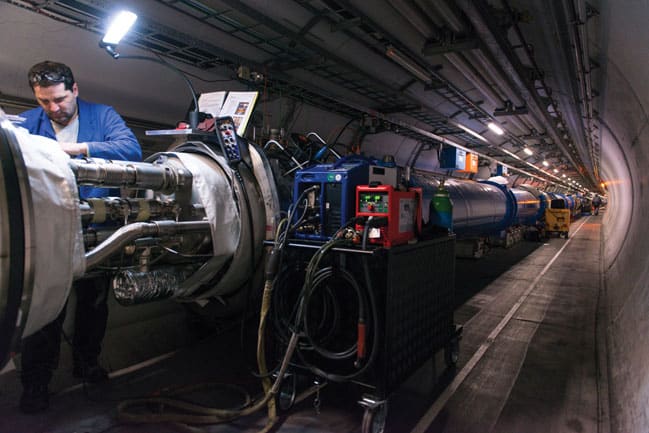
As the design of the LHC started way back in 1984 and since then many improvements have been made in the fields of engineering and science and physics, if you had the opportunity do you feel that you could drastically improve the design of the LHC using newer materials and processes? And what would the changes be? And finally what would you predict any such upgrades or changes in design would yield in terms of results?
JT: The first concept of the LHC effectively dates back from the 1980s; nevertheless, the design of its main systems continued up to the end of the 1990s, giving the opportunity to integrate technical developments occurring in between. Also, at the time of its initial concept, in some areas, such as computing, the expected improvements in terms of performance were taken into account, building on future improvements (Moore’s law).
In terms of superconducting magnets, the main LHC components, it is correct that new materials have appeared since then. Niobium-titanium alloy (NbTi) is used for the LHC superconducting magnets. Since then, for example, Niobium- tin (Nb3Sn) is used as well, a superconductor having higher performance than NbTi. Also high-temperature superconductors (HTSs) are emerging.
It would not be efficient to change all LHC magnets. Nevertheless, CERN plans to take advantage of the enhanced performance of the superconductors in two ways:
1. The HL-LHC (High Luminosity LHC project) is an upgrade of the LHC machine to increase the total number of collisions (luminosity) by a factor 10 in order to further increase its discovery potential beyond 2020. This improvement can be obtained by replacing some LHC NbTi magnets with Nb3Sn ones.
2. The FCC (Future Circular Collider study) is a study for post-LHC particle accelerator options with an energy of about one order of magnitude higher. High-field superconducting magnets are a key technology for the successor of the LHC. Low-temperature superconductors (LTSs) such as Nb3Sn and HTSs are considered.
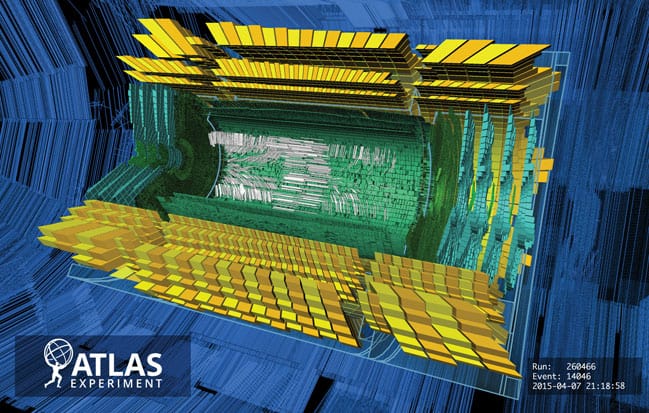
Are there any changes in the physical forces that the structures that make up the LHC experience as a result of the upgrade? If so, what reinforcement was necessary, where was this applied and how?
JT: During the first run of operation, so before the first long shutdown (LS1) that took place in 2013–14, the LHC was run at a maximum energy of 8TeV centre of mass. It is now running at 13TeV centre of mass, so about double. To achieve this, the current in the LHC superconducting dipole magnets has been increased from 6,700A to 11,000A. At a first approximation, the electromagnetic forces are increasing proportionally to the square of the current, so almost three times larger.
The LHC was designed to operate at 14TeV centre of mass corresponding to a current of almost 12,000A. So there was no need to reinforce its structures except the LHC splices (electrical joints). The LS1 was triggered by the need to consolidate more than 10,000 splices between the superconducting magnets. They were both consolidated electrically and mechanically to withstand safely the higher current.
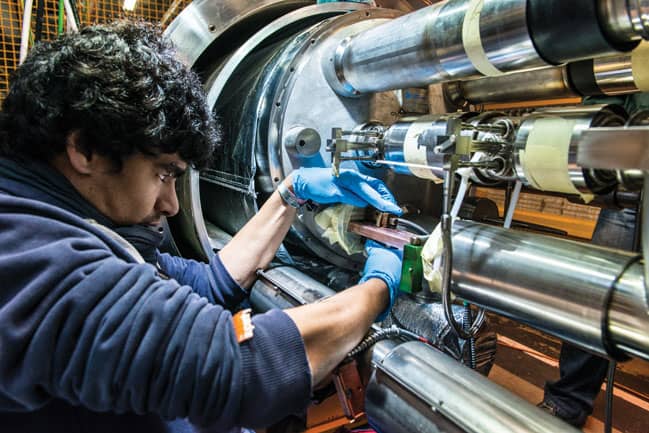
How do you design a detector for particles that barely interact with matter, if they exist at all?
FP: The most elusive particles presently known are neutrinos. The study of their properties will allow us to gain a better understanding and possibly to extend the knowledge of the present standard model of elementary particles.
Neutrinos are the neutral partners of the charged leptons (electron/muon/tau), they have a very tiny mass (actually close to zero) and they interact with the ordinary matter only through the ‘week force’. They are difficult to detect as they can travel, at the speed of light, practically unperturbed over very long distances even in dense media such as the Earth (mean free path of more than 109km) or the Sun.
As a consequence, ‘neutrino’ experiments have to rely on huge multi-kilotonne detectors coupled with very intense neutrino beams, which can be either artificial (produced as from particle accelerators or at nuclear reactors) or natural (from the nuclear fusion in the Sun, or from cosmic rays interacting in Earth’s atmosphere). Artificial neutrino beams are available in Europe (CERN), the US (FNAL) and Japan (KEK, T2K). They produce ~1018 neutrinos per day and serve multi-kilotonne detectors located at distances from the production target ranging from few hundred meters to several hundred kilometres.
Only a few neutrino interactions per day are recorded in these detectors. Most of the time, neutrinos interact with ordinary matter, transforming into the lepton partner and transferring energy to the target nucleus. Hence a neutrino detector needs to be able to fully reconstruct the products of the interactions in order to infer the nature of the parent neutrino. This is usually done employing ‘imaging’ detectors able to provide a 3D picture of any event, with high granularity (~mm) and with excellent ‘calorimetric’ response, to accurately measure the direction, the energy and the kind of all particles produced in the interaction.
Examples include the Water Cherenchov detector adopted by the 50ktonne SuperKamiokande experiment in Japan, the Liquid Argon Time Projection Chamber (1ktonne ICARUS experiment in Europe), the Photographic nuclear emulsions (2ktonne OPERA/Europe) and the Sampling Calorimeter approach adopted in the US by the Minos and the Nova collaborations.
Given the extremely week neutrino interaction rate, these huge detectors are generally located deep underground, well shielded from the cosmic rays, which can possibly mimic neutrino interactions, by several kilometres of overburden rock. The latter feature allows us to use these large detectors as observatory of other very rare events such as the proton decay (related to the ordinary matter stability) or even other unexpected phenomena.
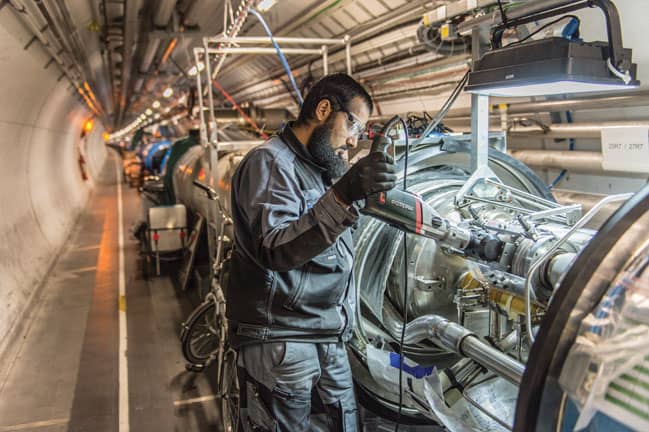
What changes needed to be made to CERN’s accelerators to provide particles with the appropriate energy?
JT: The first LHC long shutdown started in February 2013. It was triggered by the need to consolidate the 13kA splices between the superconducting magnets to allow the LHC to reach safely its design energy of 14TeV centre of mass.
The consolidation of the LHC superconducting circuits were carried out in the frame of the SMACC (Superconducting Magnets And Circuits Consolidation) project. It has principally covered the consolidation of the 10,170 13kA splices but also other activities linked to the superconducting magnets such as the exchange of 18 main cryomagnets, the installation of the additional safety-relief devices, the repair of known helium leaks and other consolidation activities.
In addition, the quench protection system of the LHC’s superconducting magnets was also improved. Also, the cryogenics systems that are keeping the superconducting magnets at 1.9K has been maintained and its control systems have been upgraded.
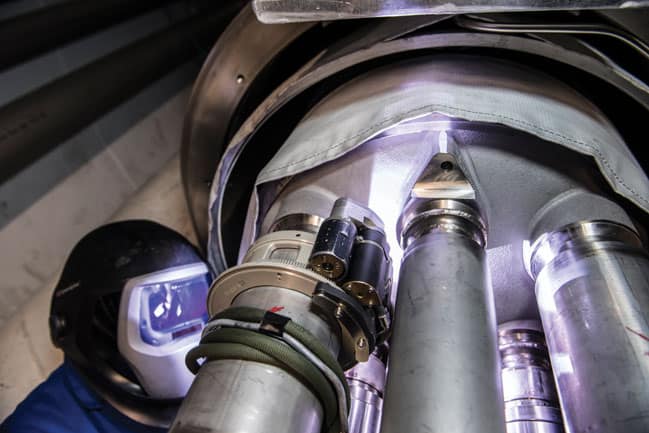
Would CERN be able to manage research at any higher energy, if the next round of experiments indicates that this might be necessary? If so, how might this be accomplished?
JT: CERN is already undertaking a design study for the post-LHC particle accelerator at the high-energy frontier: the FCC (Future Circular Collider) study.
It is exploring the potential of hadron and lepton circular colliders, performing an in-depth analysis of infrastructure and operation concepts and considering the technology research and development programmes that would be required to build a future circular collider.
For example, the eight Tesla dipole magnets that are used to steer the 7TeV beam along the 27km circumference of the LHC would need to be replaced by 16 or 20 Tesla magnets to reach the energy of 50TeV per beam in a ring of, respectively, 100km or 80km in length.




Glasgow trial explores AR cues for autonomous road safety
They've ploughed into a few vulnerable road users in the past. Making that less likely will make it spectacularly easy to stop the traffic for...